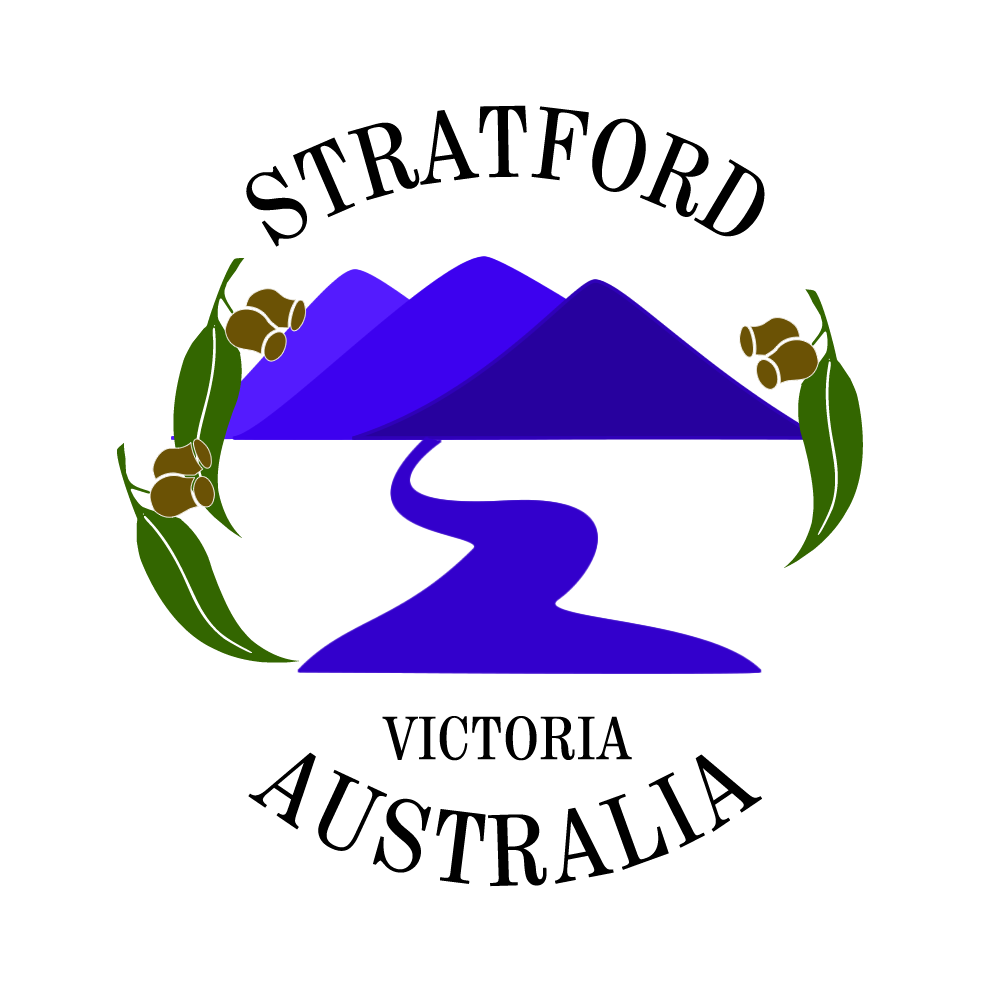About Stratford – Victoria
Situated at a ford on the Avon River, 232 km east of Melbourne via the Princes Highway. The town services the local and surrounding community of 2617 (2016 census) people and an increasing number of travellers. Stratford’s principal industries are dairying, sheep, cattle and horse breeding and vegetable crops.
The Bridge over the Avon River
There is some dispute about the origin of the town’s name. Some claim it to be a variation on “straight ford” while others have suggested it comes from England. One possible explanation seems to be that it is named after the birthplace of William Shakespeare at Stratford-on-Avon in England. In any case the locals have embraced the connection and a Shakespearean festival is an annual event.
However, a more likely explanation is that the region was first settled by explorer, Angus McMillan, who named the Avon River after a body of water in his native Scotland. Our Avon is pronounced the same way as the Scottish river not the English (aa-von). McMillan established a pastoral run in 1840 at Bushy Park, to the north-west of the current township.
Journalist John Stanley (“The Vagabond”) James claimed, in 1886, that “the first house in Gippsland was built on the site of Stratford, and it was, after Sale, the first surveyed township in the north”. He may have been referring to “Strathfieldsaye”, the homestead of squatter, William Odell Raymond, who established a run in the area in 1842, although Hartwich’s Hut, on the same property, is thought to have been built before the house.
Stratford prospered in the 1860s as a supply centre for diggers at the Omeo and Dargo goldfields. Other early buildings which are still standing include St Patrick’s Catholic Church c 1855, St Andrew’s Uniting Church – formerly the Presbyterian Church built in c 1857, what is now the R.S.L. Hall (built 1866), the Church of Holy Trinity (1868), the Methodist Church, including its bell tower (1873), and the post office (1884).
The Hotel
In 1863, the Ramahyuck Moravian Mission was established several kilometres downstream from Stratford, on the north bank, by Reverend August Hagenauer. The name combines “Ramah”, the home of Samuel in the First Book of Kings, with “yuck”, an Aboriginal term reputedly meaning “our place”. Its intention was to remove the local Aborigines from their tribal culture and anglicise them. To this end they were taught to play cricket. Though it was never self-sufficient, the mission cultivated fruit, vegetables, sheep, cattle and bees. A church, school and orphanage were built and the 931 hectares were fenced in. At its peak, eighty Aborigines were permanent residents.
Financial difficulties caused a slow decline from 1888 until the mission’s closure twenty years later. The Aborigines were taken to another mission, the buildings were destroyed and the land was sold off. Today, all that remains are three headstones and some lacerations around the trees where the bark was torn off to make domestic implements, shields and canoes, and where toeholds provided access to the trees’ possums. One of the gravestones belongs to Hagenauer’s first Aboriginal convert, Nathaniel Pepper. About ninety other tombs, eighty of them belonging to aborigines, were only marked by perishable wooden crosses.
The Avon River
Stratford has two parks adjacent to the Avon River, the bed of which has proved attractive to gemstone collectors over the years. Author and naturalist, Tarlton Rayment, lived at Briagolong (meaning “people of the west”), 14 km north.
Things to see:
Knob Reserve
3 km south-east of Stratford is a 56-hectare park called Knob Reserve. At the crest of the hill you can look down upon the local farmlands, the foothills and the Avon River. The reserve is ideal for a picnic and has the appropriate facilities.
Mineral Spring
For those headed north-east along the Princes Highway, there is a small mineral spring at the foot of Slavins Hill, 1 km out of town.
Australian Wildlife Art Gallery and Sculpture Park
Past the Munro turn-off is the Australian Wildlife Art Gallery and Sculpture Park where you can see Australia’s wildlife faithfully depicted in paint, clay and bronze by award-winning artists, Chris and Dawn Stubbs.
The Bataluk Cultural Trail
The Bataluk Cultural Trail extends from Sale in the east, through Stratford, Mitchell River National Park, Bairnsdale, Metung, Lake Tyres, Buchan and Orbost to Cape Conran in the west. It follows the trails and trading routes of pre-colonial days and focuses on elements of Koorie history and culture, including Dreamtime stories, traditional lifestyles, the Den of Nargun, Legend Rock, Aboriginal Keeping Places, archaeological sites such as canoe trees and shell middens (some dating back 10 000 years), cultural centres of the region, and aspects of European invasion, colonial settlement and present-day existence. At Stratford the focus of the trail is on Knob Reserve.
